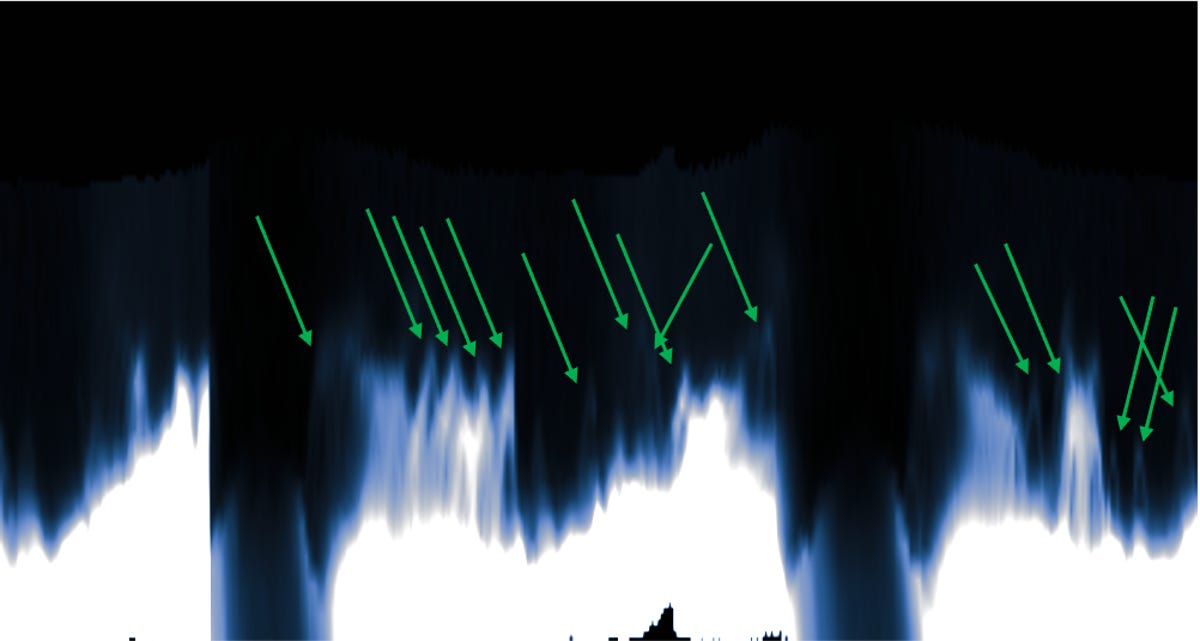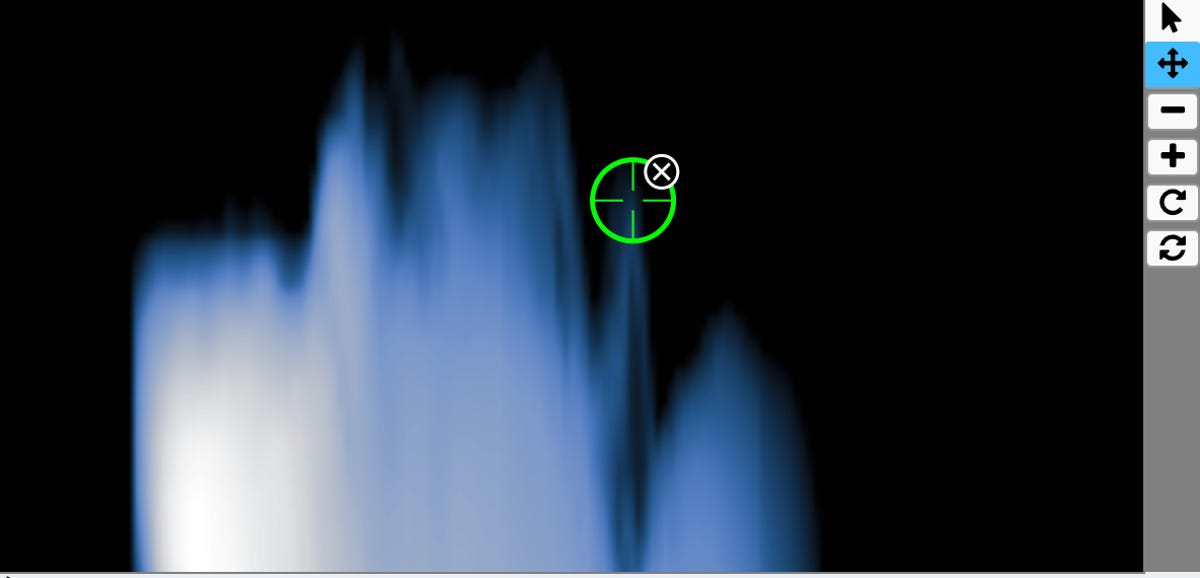What’s happening
NASA is outsourcing the job of Martian cloud hunting to the public. You can take part online, whenever you want.
Why it matters
The more Mars cloud detections the agency has, the better our chances of solving one of the red planet’s biggest mysteries.
If you’re anything like me and can’t resist clever websites — like this one, which takes you through the evolution of trust — you’re going to love NASA’s latest endeavor.
With a new project called Cloudspotting on Mars, the agency is calling all citizen scientists to fill their free time by sifting through Martian atmospheric data. Anyone can do it, anytime.
You can access the system via the online platform Zooniverse — and as the program’s name might give away, the goal is simply to spot Martian clouds concealed within datasets produced by NASA’s Mars Reconnaissance Orbiter. And though the whole process is actually quite fun — almost wonderfully trancelike — monitoring these clouds serves a purpose well beyond mind-numbing entertainment.
Basically, NASA scientists are outsourcing the cloud-detection job because they believe we need a ton of information on these wispy puffs to clear up a long-standing astronomy conundrum: What’s up with Mars’ atmosphere?
Where’s Waldo? but with clouds
From our observations on Earth, Mars appears to have an atmosphere that’s only about 1% as dense as Earth’s. But that’s odd, because an abundance of evidence, per NASA, suggests the red planet used to have an atmosphere significantly thicker than our own.
So, what happened to that once robust Martian outer shell?
Changes can be seen in the sand dunes of Mars from early spring (left) through the Martian winter. The final panel (far right) shows more of the exposed dark dunes as the overlying layer of seasonal ice evaporates back into the atmosphere.
NASA/JPL-Caltech/Univ. of Arizona
Well, if we can decode the cloud population on Mars, we might pave the way for an answer, the agency argues. This theory comes from the fact that these shrouds of Martian gas — sometimes made of carbon dioxide, which you might know as dry ice, and sometimes of ice water — pretty much make up the structure of the planet’s middle atmosphere.
“We want to learn what triggers the formation of clouds — especially water ice clouds, which could teach us how high water vapor gets in the atmosphere — and during which seasons,” Marek Slipski, a postdoctoral researcher at NASA’s Jet Propulsion Laboratory in Southern California, said in a statement. All in all, this knowledge could inform us about how Mars’ atmosphere evolved over time to become the flimsy coating we see today.
There’s just a bit of an issue. The notion of manually finding every Martian cloud is slightly far-fetched.
“We now have over 16 years of data for us to search through, which is very valuable — it lets us see how temperatures and clouds change over different seasons and from year to year,” Armin Kleinboehl, Mars Climate Sounder’s deputy principal investigator at JPL, said in a statement. “But it’s a lot of data for a small team to look through.”
And as Cloudspotting states in its tutorial, “there are so many clouds, a single individual cannot find them all on their own. With help from you and other citizen scientists, we think tens of thousands of these clouds can be identified!”
By identifying these clouds in MCS observations we can create maps of where they form, determine their compositions (water, carbon-dioxide, or dust), and see how they change throughout the day and during different seasons. pic.twitter.com/X0lTg5VBmx
— The Zooniverse (@the_zooniverse) June 28, 2022
Here’s how it all works.
Locking in on arches
First of all, no, the dataset clouds you’ll be tracking don’t look like clouds. Frankly, they look like bluish tie-dye streaks you’d see on a DIY camp T-shirt.
But within these streaks lurks the Martian mystery’s treasure. Each point of interest is represented by arches among the azure patterns, because as the NASA orbiter moves around and passes clouds, those clouds appear to “rise from behind the atmosphere to a higher altitude then fall again,” as the tutorial puts it, therefore displaying an archlike shape in the data.
The peaks of these arches are the true locations of the clouds that NASA’s after.

Here’s what the arches look like in the Cloudspotting program.
Cloudspotting/NASA
Every time you log on to get your cloud-hunting duties in for the day, you’ll be looking at these images — which span hours of orbiter observations — and you’ll be asked to mark the peaks of all the arches you find. Here’s a screenshot of one of my catches.

I got one!
Screenshot by Monisha Ravisetti/CNET
It can get slightly difficult depending on the image at hand, especially because you have to look at a few different frames of the same dataset to be sure a cloud candidate doesn’t go unnoticed. Arches themselves can also be kind of hard to make out at times.
But on the bright side, Cloudspotting also includes a sort of forum area where you can talk to other cloudspotters about your trials and confusions.
So, find your cloudspotting buddies, and happy hunting.


